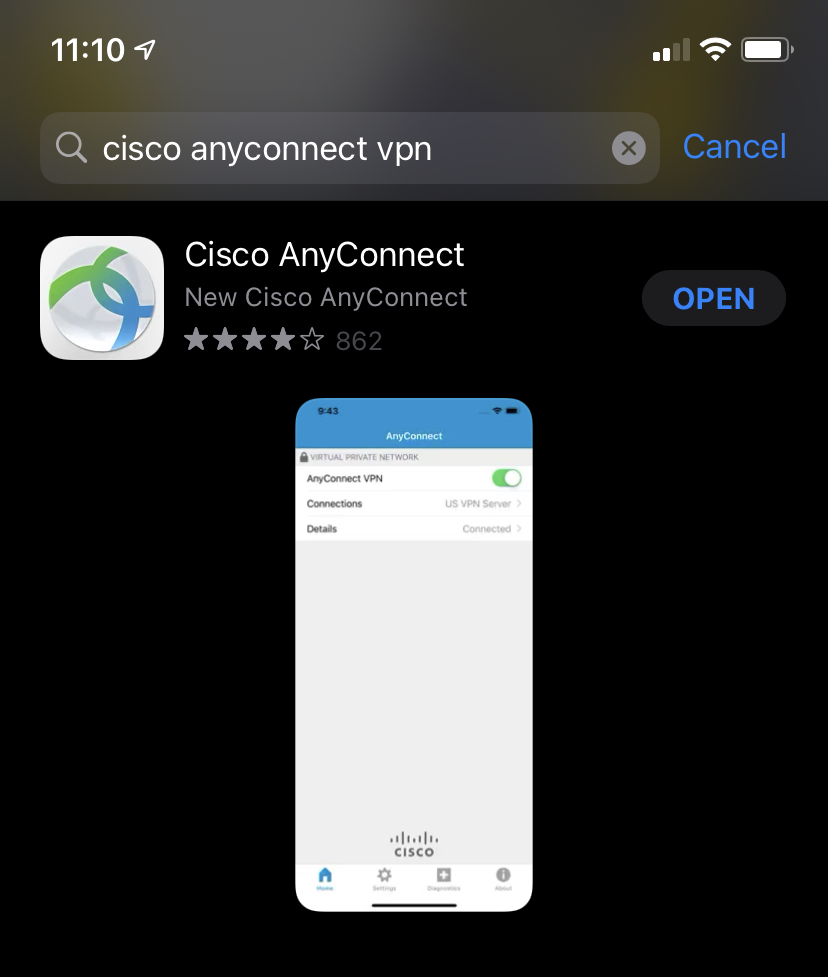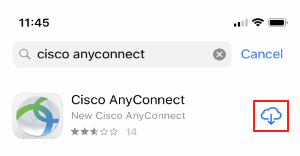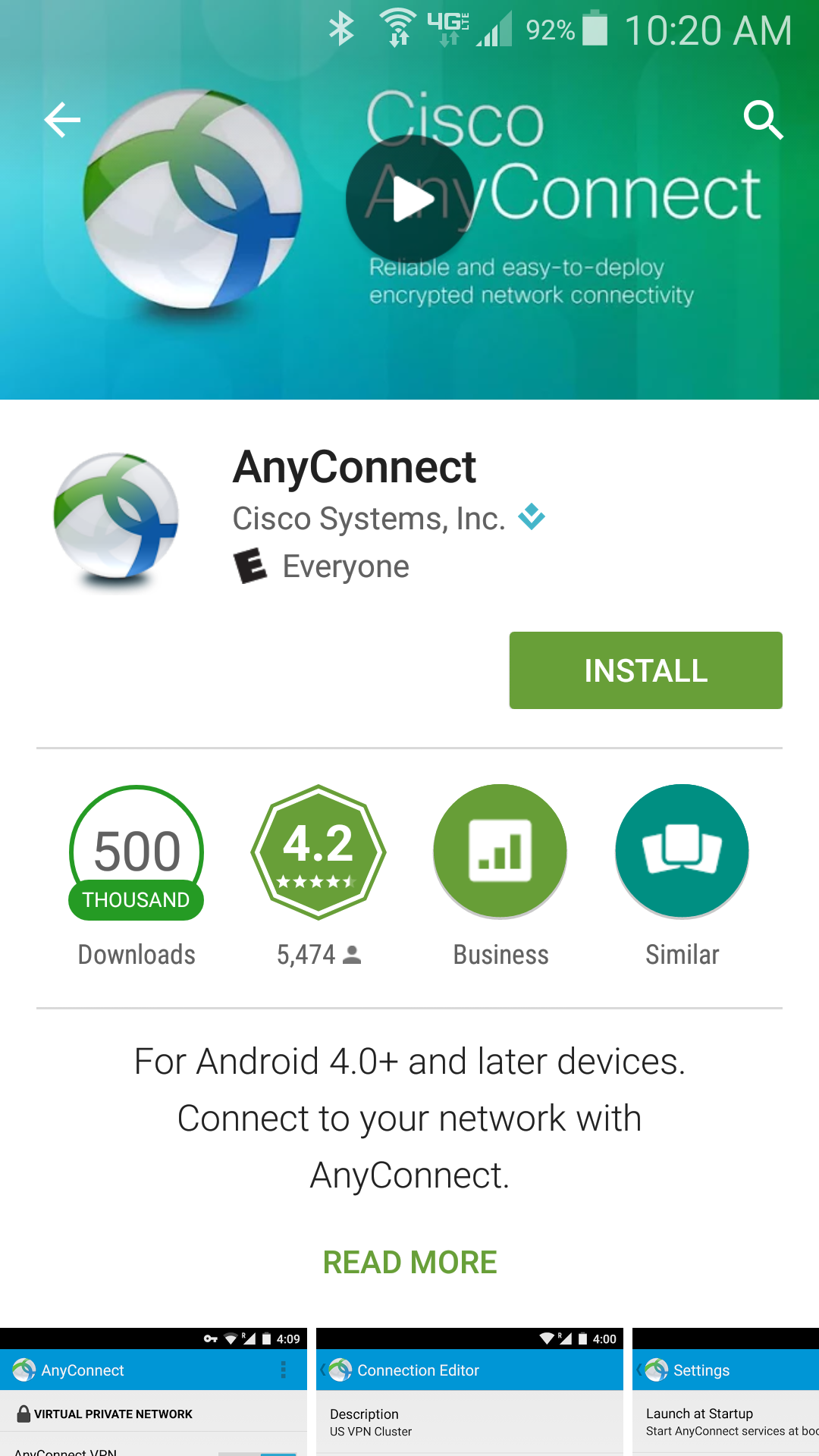Cisco AnyConnect VPN Installation for Windows 10

Installation and Setup Instructions for Windows
Create an AnyConnect profile which uses the uploaded XML file. Associate the AnyConnect profile with the Group policy. Network Client Access-Group Policy-Advanced-SSL VPN Client-Client Profile. After this, whenever a user establishes AnyConnect for that Group Policy,they will download the new profile. Jadyr Pavao and I have the same issue. Update: It looks like AnyConnect and the nacl-development-environment plugin may have a conflict. Following Pete's recommendation, I removed the nacl-development-environment plugin, removed and reinstalled AnyConnect, and vpn is working again. APPLICATION DESCRIPTION: AnyConnect for Kindle Fire HD provides reliable and easy-to-deploy encrypted network connectivity from Kindle Fire HDs and new (2012) Kindle Fires to Cisco VPN head-ends (including Cisco ASA 5500 Security Appliances)by delivering persistent corporate access for users on the go. AnyConnect provides reliable and easy-to-deploy encrypted network connectivity from devices by delivering persistent corporate access for users on the go. Whether providing access to business email, a virtual desktop session, or most other Android applications, AnyConnect enables business-critical application connectivity.
Step 2:
Locate and open the downloaded install package. Remote desktop connection for the mac.

Play Store
We don't have any change log information yet for version 4.8.03052 of Cisco AnyConnect Secure Mobility Client. Sometimes publishers take a little while to make this information available, so please check back in a few days to see if it has been updated.
Step 4:
Agree to the Software License Agreement and click Next.
Step 6:
You must have elevated privileges to install Cisco AnyConnect Secure Mobility Client. When prompted, choose Yes Drive for mac torrent. to proceed with installation.
Step 7:
You have successfully installed the Cisco AnyConnect Secure Mobility Client and can begin using it. Click Finish to exit the Setup Wizard.
Step 8:
Launch the Cisco AnyConnect Secure Mobility Client from the Start Menu.

Step 9:
Scan mac network for devices. The first time you launch the client, enter 'vpn.olemiss.edu'.
To establish a secure VPN connection, click Connect. To end your VPN session, click Disconnect.
Overview
Stanford's VPN allows you to connect to Stanford's network as if you were on campus, making access to restricted services possible. To connect to the VPN from your Windows computer you need to install the Cisco AnyConnect VPN client.
Two types of VPN are available:
- Default Stanford (split-tunnel). When using Stanford's VPN from home, we generally recommend using the Default Stanford split-tunnel VPN. This routes and encrypts all traffic going to Stanford sites and systems through the Stanford network as if you were on campus. All non-Stanford traffic proceeds to its destination directly.
- Full Traffic (non-split-tunnel). This encrypts all internet traffic from your computer but may inadvertently block you from using resources on your local network, such as a networked printer at home. If you are traveling or using wi-fi in an untrusted location like a coffee shop or hotel, you may wish to encrypt all of your internet traffic through the Full Traffic non-split-tunnel VPN to provide an additional layer of security.
You can select the type of VPN you want to use each time you connect to the Stanford Public VPN.
Install the VPN client

- Download the Cisco AnyConnect VPN for Windows installer.
- Double-click the InstallAnyConnect.exe file.
- When a message saying the Cisco AnyConnect client has been installed, click OK.
Cisco Anyconnect App Store Login
Connect to the Stanford VPN
- Launch the Cisco AnyConnect Secure Mobility Client client.
If you don't see Cisco AnyConnect Secure Mobility Client in the list of programs, navigate to Cisco > Cisco AnyConnect Secure Mobility Client. - When prompted for a VPN, enter su-vpn.stanford.edu and then click Connect.
- Enter the following information and then click OK:
- Group: select Default Stanford split- tunnel (non-Stanford traffic flows normally on an unencrypted internet connection) or Full Traffic non-split-tunnel (all internet traffic flows through the VPN connection)
- Username: your SUNet ID
- Password: your SUNet ID password
- Next, the prompt for two-step authentication displays. Enter a passcode or enter the number that corresponds to another option(in this example, enter 1 to authenticate using Duo Push to an iPad). Then click Continue.
- You may have to scroll down the list to see all of your options.
- If your only registered authentication method is printed list, hardware token, or Google Authenticator, the menu does not display. Enter a passcode in the Answer field and click Continue.
- Click Accept to connect to the Stanford Public VPN service.
- Once the VPN connection is established, a message displays in the lower-right corner of your screen, informing you that you are now connected to the VPN.
Disconnect from the Stanford VPN
Cisco Vpn Anyconnect Download
- In the notification area, click the Cisco AnyConnect icon if it is displayed. Otherwise, go to your list of programs and click Cisco AnyConnect Secure Mobility Client.
- At the prompt, click Disconnect.

